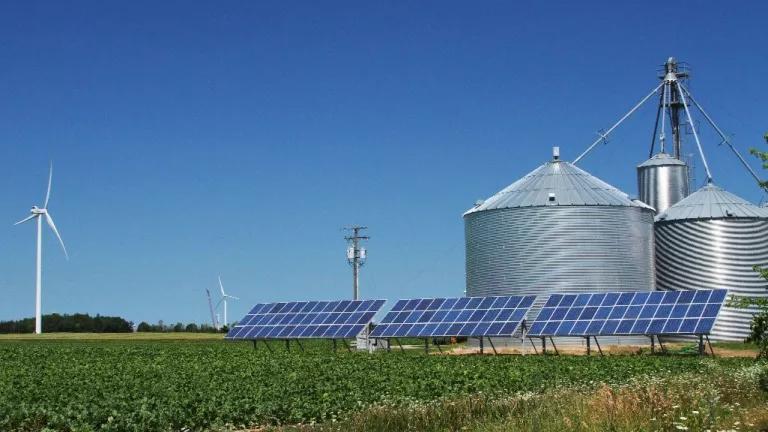FERC Begins to Plan for the Age of Extreme Weather
FERC has undertaken an important effort to prepare the electric grid for the extreme weather. While this effort is welcome, FERC should make important improvements to it to ensure our grid is ready for the climate-fueled challenges before it.

Flames light up the night as a wildfire burns in the San Jacinto Mountains above Idyllwild-Pine Cove, Riverside County, California.
Levan Badzgaradze
This summer has confirmed what the world’s top climate scientists have warned about for years: Climate change is causing more frequent and extreme weather events. Whether it was wildfires in New Mexico, record heat waves in California and Texas, or flooding in St. Louis, Dallas, and eastern Kentucky, it’s now clear that climate change is posing risks to all of us.
That’s why NRDC and other public interest groups are supporting two proposed rules from the Federal Energy Regulatory Commission (FERC) that would put the utility industry in a better position to withstand extreme weather and help prevent blackouts and other power woes.
The first is a proposal that would require transmission planners to study extreme heat and cold events and to develop plans to address potential impacts. It would require the North American Electric Reliability Corporation (NERC)—a group with the mission to enhance the reliability and security of the power grid—to develop the reliability standards that transmission planners would use to comply with the rule.
We support a NERC standard on extreme weather with the following provisions:
- FERC should recognize that extreme weather is occurring more frequently and provide more guidance to NERC on what benchmark to use. For example, regional groups should review recent extreme weather events and account for the fact that we’re seeing more extreme weather more frequently. Setting the benchmark is key to understanding the real risks and addressing them.
- FERC must require transmission planners to plan for the failure of any generation resource due to extreme weather. Coal piles freeze, gas lines stop flowing, and nuclear plants need to shut down before a storm surge hits. Meanwhile, thermal generation can be curtailed due to low water levels that are needed for cooling, and fossil-fueled power generation experiences increased risks of mechanical failure during extreme heat and cold. And, yes, the sun doesn’t shine at night and the wind doesn’t always blow. Any NERC reliability standard addressing the effects of extreme weather needs to acknowledge the risks to all generation sources.
- Corrective action plans developed by planners must include a range of potential solutions, including technologies that increase transmission, capacity, battery storage, energy efficiency, and demand response.
- Given the drastic effect of drought on energy infrastructure, FERC should require transmission planners to study its effect on generation and reliability.
The second proposal would require transmission providers to submit onetime reports on their plans for assessing their system’s vulnerability to extreme weather along with plans to mitigate those risks. Unfortunately, this order solicits information from utilities but doesn’t require them to create extreme weather policies. FERC said it will use the information it receives to determine whether further action is needed, but it’s clear this action is required now. FERC shouldn’t wait to require action.
The proposal should also be improved in these ways:
- The proposal applies only to extreme weather impacts on transmission assets and operations under FERC’s jurisdiction. It should be expanded to include the impacts of extreme weather impacts on generators and markets, including impacts on the electricity sector from disruptions to interdependent sectors, with a particular focus on the natural gas system.
- Entities must consider and report on ways in which they account for the effects of extreme weather on disadvantaged or vulnerable communities.
- Grid operators should report on how they coordinate with neighboring regions on planning for and adapting to extreme weather events.
With these proposed rulemakings, FERC is taking an important step forward, acknowledging the reality of climate-fueled stresses and beginning to improve the resilience and reliability of the electricity system. But recognizing the real risks to all power generators and mandating that entities plan for the extreme weather that we can expect will help reduce climate risks to the grid even further. With these suggested changes, FERC’s rules will be a marked improvement and should be pursued as quickly as possible.



